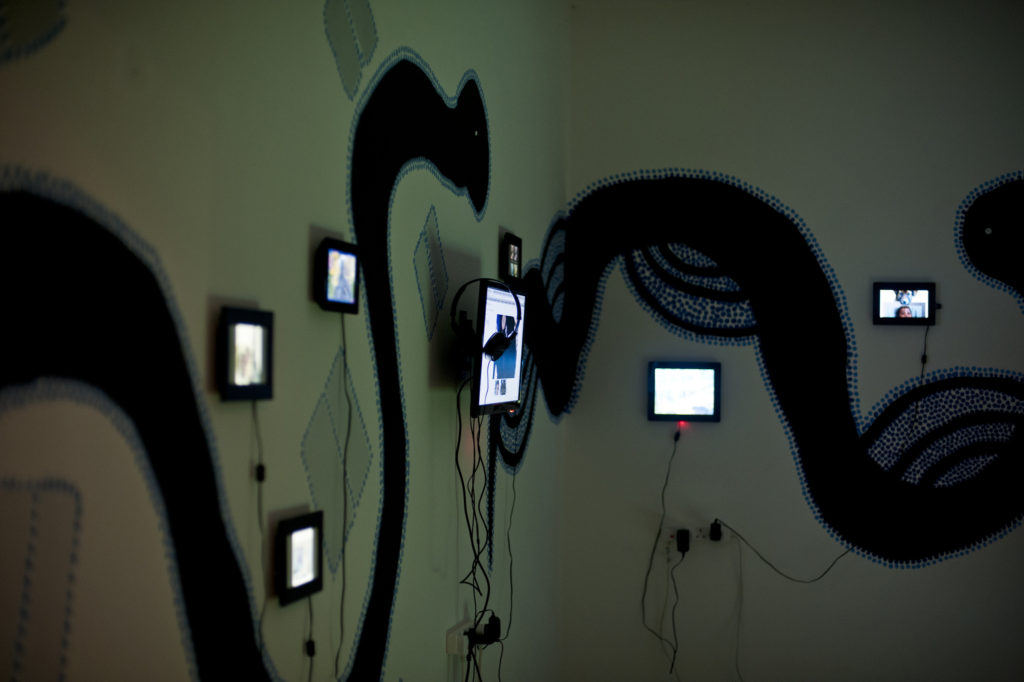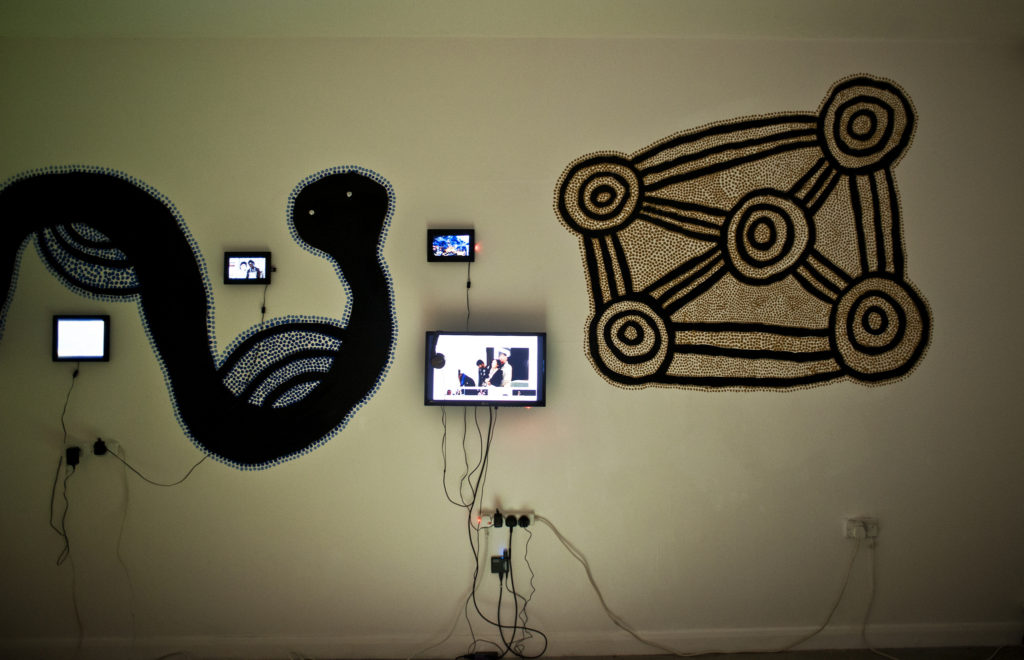Showing at Furtherfield Gallery between June 18 and August 14, Networking the Unseen claims to be the “first exhibition of its kind to focus on the intersection of indigenous cultures and zeitgeist digital practices in contemporary art.” Focusing on Australian indigenous art making, especially in the remote community of Lajamanu and the Wanayaka Art Centre, Gretta Louw’s curated show argues that these two moments have too often been considered separately and that there is rich terrain to be discovered in bringing them into critical dialogue.
The thematic tone is set early in an exhibition, which also includes work by Jenny Fraser, Sharon Nampijinpa Anderson and Brook Andrew, among others. Lilly Hibberd and Curtis Taylor’s 2012 ‘The Phone Booth Project’ greets the visitor at the Furtherfield entrance, a particular ‘Welcome to Country’. In a darkened room, wallpaper of the Australian desert, sand on the floor, and a public pay phone in the room, a film tells the story of these communication tools in three remote indigenous communities. Before the arrival of two-way radio (a precursor to the telephone), groups would greet each other and share their location by lighting fires, the smoke saying that ‘I am here and you are welcome’. So while the development of new technology, first the aforementioned transceiver and now the call-phone box has seemingly ended this traditional mode of communication, technology also creates new types of social relationships. So we see how the public phone booth has become a new gathering spot for people to speak to relatives and friends far away, to court lovers and receive offers of work. The exhibition is decidedly not a story about the eradication of indigenous culture due to expanded homogenisation of digital technologies but the unique and ongoing ways these changes are negotiated and the artistic forms they might engender.

This thematic of the social and cultural aspects of technological change underwrites the entire show. In what ways, it asks, is indigenous culture shaped by technology and digital practices, and in what ways do indigenous people speak back or utilise such change? Through this theme, the exhibition reverses the perennial locating of indigenous society to some historical past. At the same time, changes in technological pace creates new social realities and the extent to which such technologies reinforce and re-inscribe domination and colonialism is considered within the exhibition. Digital technology is never neutral. Networking the Unseen exhibits some excellent examples of the former while discussing the issues of the latter in accompanying text and in an essay by Steven Jampijinpa Patrick, a Walpri man from Lajumanu.
The issue of digital colonialism could have been further explored in the show, particularly in relation to the role art itself may play in any such process. As part of the impressive ‘YAMA’ (2014) multimedia piece, a performance in the Western Desert is broadcast directly into a Berlin gallery opening via Google Hangouts. There are real risks that digital technologies allow for an intensification of the fetishisation of indigenous culture and the denial of indigenous authorial voice. Also —what does it mean to continually equate indigeneity with remoteness rather than urbanism?

Google Hangouts is just one form of networked circulation in which indigenous images are considered in the exhibition. Selfies and other social media templates make appearances, memorably in ‘Mamu’ (2014), another film by Curtis Taylor in which the sharing of pictures of sacred knowledge via the protagonists Facebook page ends in tragedy. This perhaps points to an uneasy relationship between big data and information technologies and cultural practices in which certain knowledge is sacred, secret and attained only through proper initiation.
And so while the Networking the Unseen doesn’t offer a definitive answer on how networked culture may serve to empower or disempower indigenous communities in the 21st century, it has, at least, initiated a potentially fruitful conversation.**













